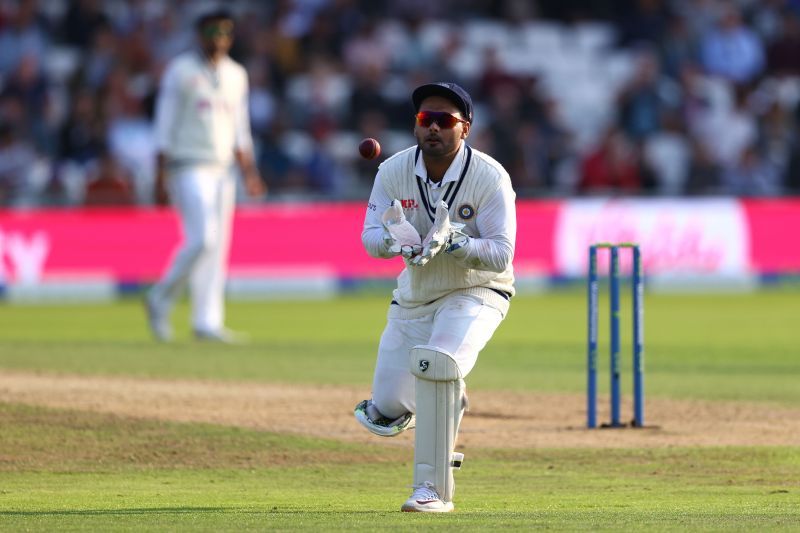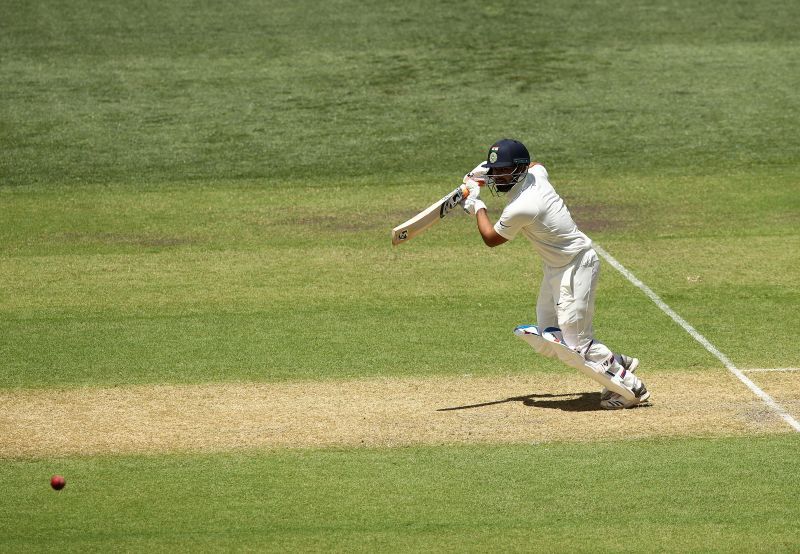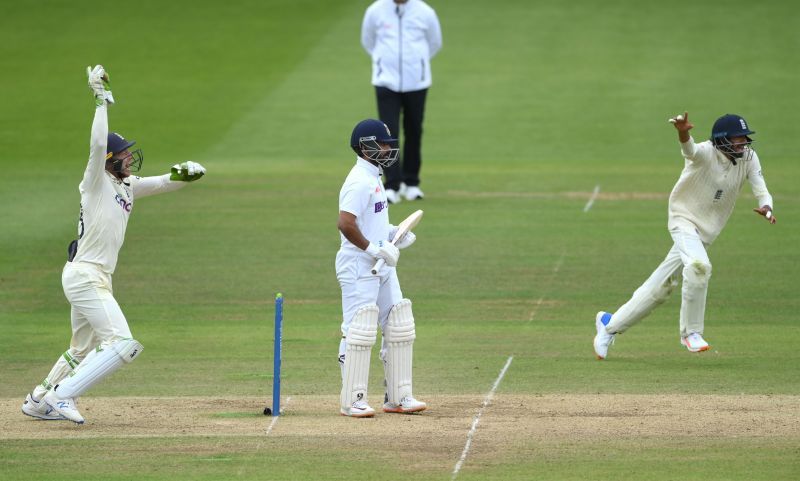
Stick or twist: The age-old Rishabh Pant debate returns

Back in December 2020 at Adelaide, when India sans Rishabh Pant crumbled to arguably their lowest ebb in Test cricket, plenty felt that a cricketing apocalypse was about to grip the Men In Blue. Not only had they capitulated spectacularly, they were also seeing their skipper Virat Kohli return home for paternity leave.
Among the debris, the omission of Pant for the 1st Test, which came on the back of an uninspiring IPL and a poor run of form in other formats, quietly slipped into the periphery. At that moment, it seemed that Pant, for all the hype that he had generated since his international bow, would slip into the wilderness, personifying another case of unfulfilled talent.
Rather remarkably, Pant changed that narrative completely. In fact, he titled it upside down, meaning that by the time the tour ended, the wicket-keeper was the hero garlanded more than most.
India won their second successive Test series Down Under and all of a sudden, Pant became the brand ambassador of the bravery and courage associated with the current Indian team. The chatter regarding his impetuousness, impatience and often reckless batting nature disappeared almost as instantly, if not quicker.
Thus, it seems a little ironic that months after Pant changed the way a lot of Indians have historically looked at Test cricket, he is now having to bat away questions about his mindset and the brand of cricket he plays.
The dismissals in the current rubber have highlighted his technical shortcomings and cast light on elements that he had seemingly swatted away (literally and metaphorically) in Australia. So much so that there have been clamours from a few quarters for him to be dropped or, more damningly, for him to amend his ways.
Back in Australia, India had found themselves in all sorts of strife at the Gabba and at the Sydney Cricket Ground. For a lot of cricket-watchers in the country, even a draw would’ve sufficed – such was India’s plight. Yet, with Pant in the mix, people started believing that even the impossible was possible. And that there was a method to the madness Pant was unleashing.
Also Read: Rishabh Pant - The maverick who made India believe
During that tour, Pant picked and chose his moments to attack extremely well. He was a lot more judicious than what the world had become accustomed to and unsurprisingly, reaped rewards. The more important part was that he walked out to bat with an uncluttered mind and knew exactly what he wanted to do.
Rishabh Pant's techinque has come under the scanner
In England, though, that hardly seems to be the case. Not only is Pant looking extremely tentative around his off stump, he also doesn’t seem to have the requisite conviction to transfer pressure onto the bowlers – an aspect that has been the cornerstone of his success in international cricket.
During the World Test Championship final, Pant tried to put the New Zealand bowlers under the cosh in the second innings. He threatened for a brief while too before an agricultural swipe across the line against Trent Boult brought his downfall.
In the aftermath of the fixture, plenty pointed out that Pant was “overrated” and that he was to blame for the defeat. The bare fact was that he had just run out of batting partners and at least tried to do something at a time when he had seen his illustrious teammates morph into sitting ducks.
To an extent, the way Pant gets dismissed magnifies his deficiencies against the moving ball, for he looks quite ugly when doing so. Ever since he started his career, he hasn’t been blessed with extraordinary footwork nor is he a player intrinsically instructed to play close to the body.
Thus, the wafts that have embodied his current spell in England are something that will take hours of correction and something that won’t happen overnight. Knowing Pant, he would be aware of these drawbacks and would want to rectify it swiftly.
Pant, though, often uses another popular phrase, “back yourself and if it doesn’t happen, move on” – something that explains why he is able to conjure the knocks that no one can even dream of, let alone pull it off.
As far as comparisons are concerned, MS Dhoni – another Indian wicket-keeper who wasn’t the greatest exponent of a textbook technique, regularly faced the questions confronting Pant currently.
In the early phase of Dhoni’s career, that was pretty commonplace too. Eventually, though, he overcame it and became a solid contributor in the lower middle order. When talking about the early stages, though, most of Dhoni’s substantial essays came when he counter-punched – a trait that he shares in common with Pant.
In the 2000s, Dhoni scored 50 or more 19 times. Whenever he did so, his strike rate zinged up to 70.27 – a significant upgrade from his career strike rate of 59.11. Similarly, Pant, who has scored 50 or more 9 times in 40 innings and averages 40.27 overall, scores at 81.77 runs per 100 balls when crossing the fifty-run barrier.

Thus, there is evidence to suggest that people like Dhoni and Pant – people who aren’t technically sound but are capable enough to cause an almighty flutter, are allowed to express themselves because that is what sets them apart.
Quite often in cricket, a catchphrase, namely “percentage cricket” is used, which basically refers to an individual minimizing his chances of failure and maximizing whatever potential he has at his disposal. Over the years, though, “percentage cricket” has been confused with defensive cricket.
To be fair, it isn’t as startling a discovery because theory suggests that defending should always be easier than attacking and that it should be more sustainable too.
Pant, however, is far from being just an average cricketer. He has something special about him and something that most others in international cricket can’t replicate. What Pant must not be forced to do is become someone else because that will just take away the novelty and the sheer match-winning ability he brings to the fore.
In simpler terms, high percentage cricket, in Pant’s case could be more about stepping down the track and smashing the bowler over his head. A defensive mindset then could bear a lesser percentage (though it might not be for purists) for someone like Pant. And, if the series against England is any indicator, that seems to be the case.
Thus, it is imperative that the wicket-keeper is given a little breathing space, especially when he seems out of sorts because when he is on song, there are hardly any batters boasting the ability to rival him or match him stroke for stroke.
In fact, that is perhaps a given with such flamboyant cricketers, who often look very lackluster when out of touch but are just as incredible when in full flow. The returns of their brilliance definitely outweigh the slight demerits that might accrue.
Or in Pant’s case, that are accruing during the current England series. The alarming lack of runs from Messrs. Ajinkya Rahane, Cheteshwar Pujara and Kohli hasn't helped him either.

Time becomes a vital virtue then, for that is what would enable players of Pant’s ilk to become the force they are capable of. If time isn’t accorded, then the sheer bravado and even arrogance of the reverse sweep against James Anderson at Ahmedabad, the pyrotechnics at The Oval, the massacres at Sydney and of course, the miracle at Gabba simply won’t materialize.
If Pant can be garlanded like a hero, he can also be given a bit of leeway, especially when he needs it. And, as far as the murmurs around his batting philosophy are concerned, sticking with it rather than asking Pant to twist it, might be the way forward.
There will be many wicket-keepers in India that might be able to defend better than Pant, make no mistake about it. But can they affect matches as easily, impactfully and regularly as Pant does?
Success has always been a fickle friend when talking about cricketers. In Pant’s case though, it seems fickler than it has ever been for anyone. From that perspective, it could well be a case of him returning to square one, which considering the run-ins Pant has had with the purists of Test cricket (international cricket in general) is only another rendition of an age-old debate.